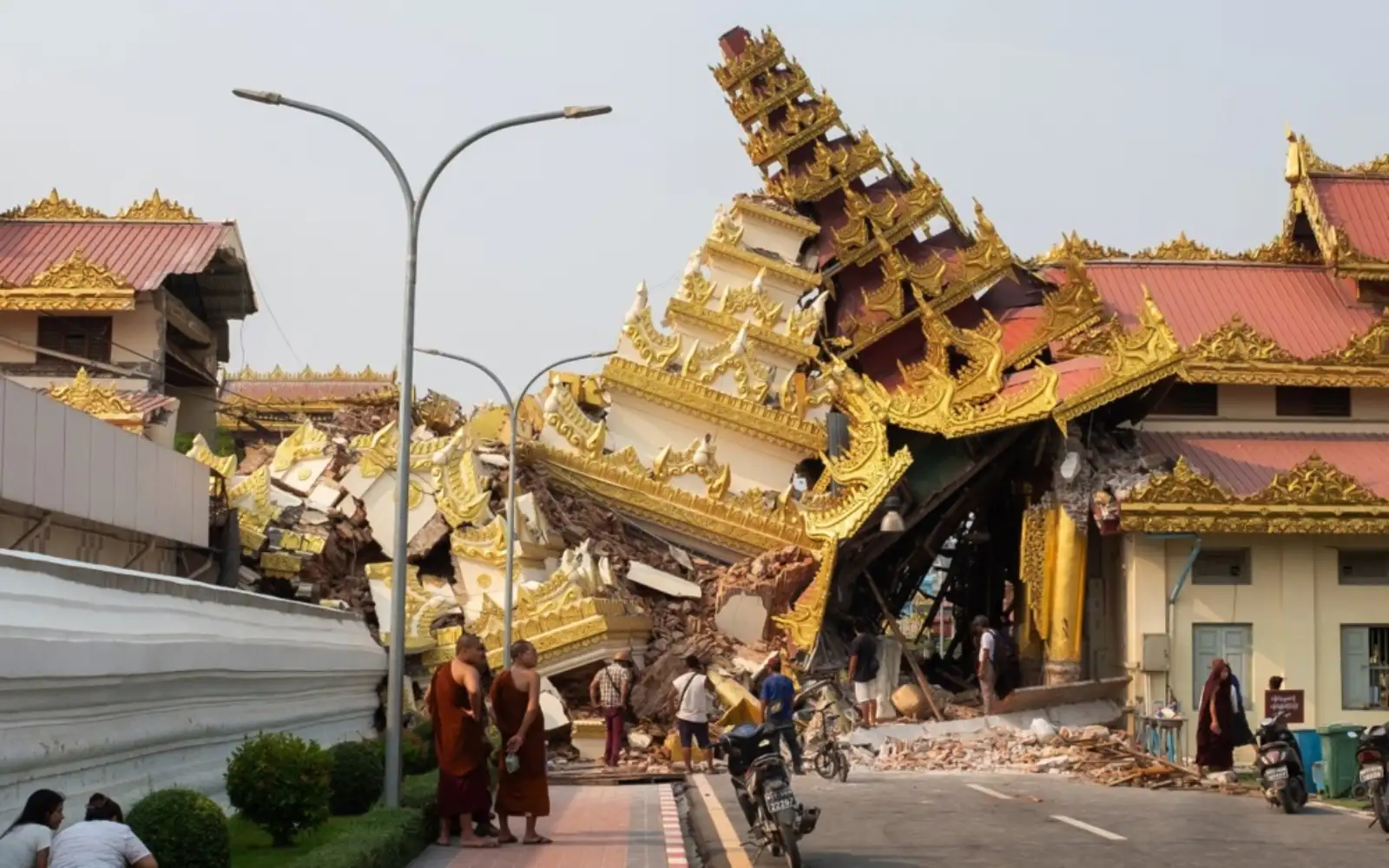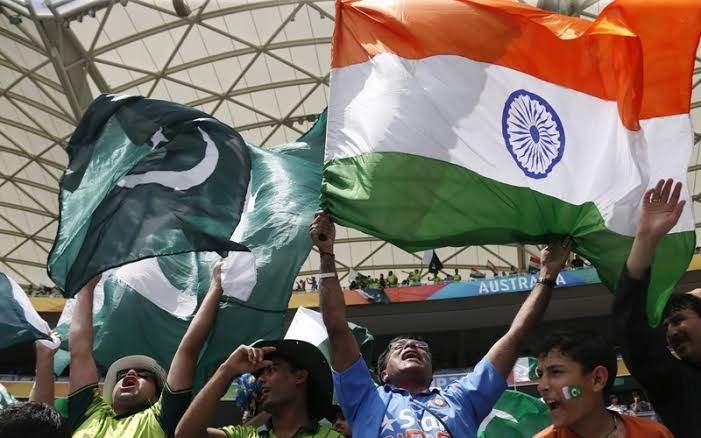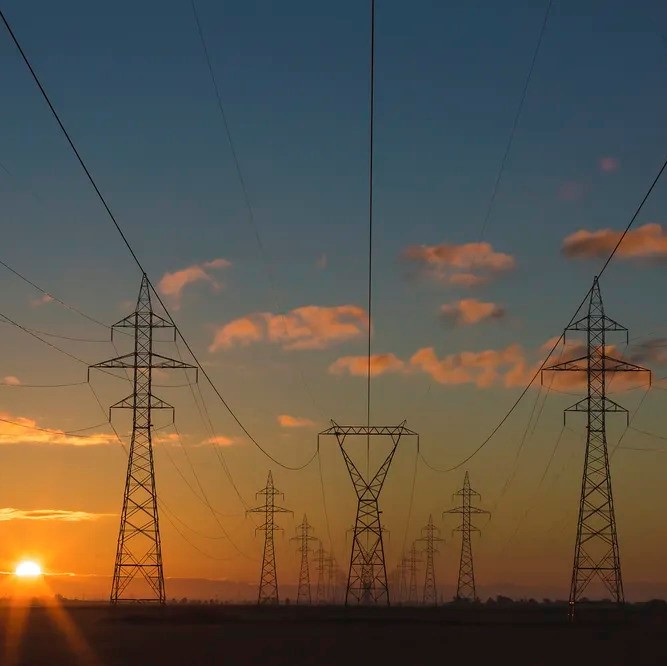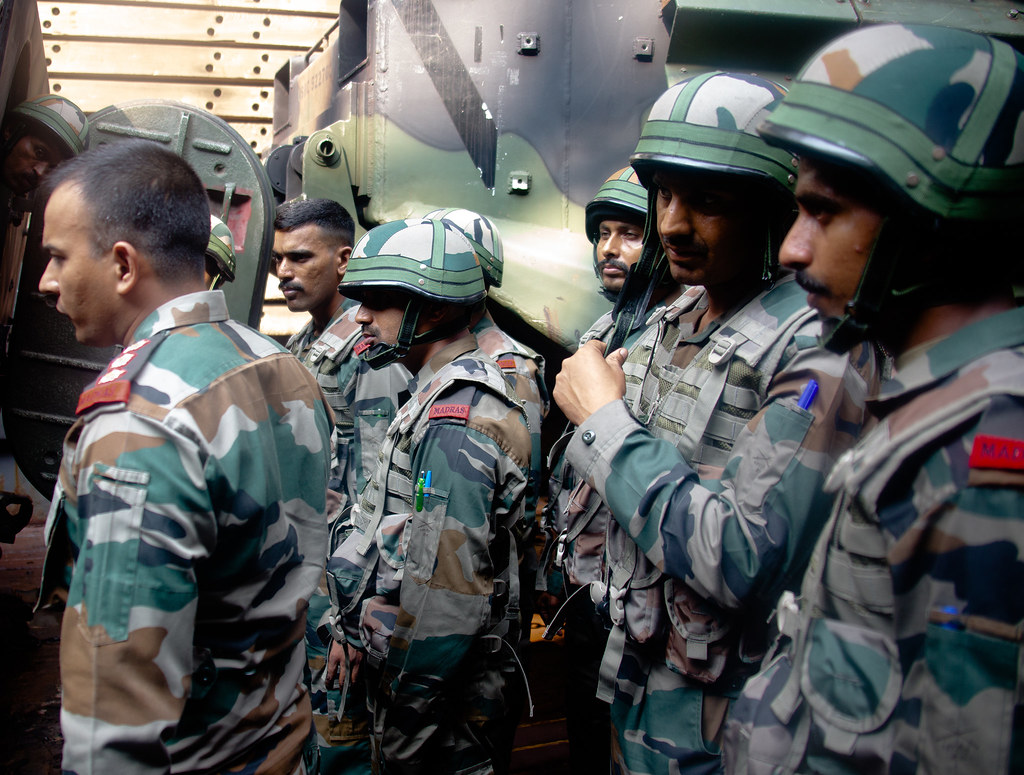In the wake of a devastating earthquake that struck Myanmar’s Mandalay region, scenes of unimaginable despair and resilience have unfolded. Survivors, with no government aid or heavy machinery, are digging through the rubble with their bare hands, desperate to save loved ones still trapped beneath collapsed buildings. As Myanmar battles ongoing political and economic turmoil, this natural disaster has compounded the suffering of its people, pushing the country to the brink of an unprecedented humanitarian crisis.
A Country in Chaos: The Immediate Aftermath
When a 7.7-magnitude earthquake rocked Myanmar, it wasn’t just the buildings that crumbled—it was an already fragile nation, struggling under the weight of prolonged political instability. For those on the ground, there was no immediate rescue response, no sirens, and no organized relief efforts. Instead, the cries of those trapped beneath debris were met by the frantic efforts of ordinary citizens, clawing through rubble with bleeding fingers in a desperate attempt to reach the survivors.
Htet Min Oo, a 25-year-old resident, recounted his harrowing experience after being pinned under a collapsed brick wall. “I barely made it out,” he said, voice trembling.
With Myanmar still reeling from the effects of the 2021 military coup, the country was already in crisis mode when the earthquake struck. Basic services had collapsed, and humanitarian organizations struggled to operate in a nation where violence and displacement were already widespread.
A Disaster in a Time of Political Turmoil
The military coup that overthrew Myanmar’s elected government in 2021 plunged the country into an ongoing civil war, with pro-democracy forces and ethnic armed groups resisting military rule. The resulting chaos has crippled infrastructure, displaced millions, and left cities without basic services. Hospitals in conflict zones have been destroyed, the power grid barely functions, and economic collapse has left many struggling to afford basic necessities.
The destruction caused by the quake extends beyond just collapsed buildings. The country’s already overwhelmed health system is now facing an influx of injured individuals, many of whom have nowhere to go for medical attention. The lack of electricity, medical supplies, and clean water has made rescue efforts even more difficult.
The Race Against Time
In Mandalay and other affected areas, volunteers and local rescue workers are risking their lives to save those trapped beneath collapsed buildings. However, without heavy machinery or proper tools, their efforts are slow and painstaking. A rescue worker in Amarapura, Mandalay, described their desperate struggle to free 140 monks trapped under a collapsed monastery:
“We cannot help because we do not have enough manpower and machines to remove the debris,” he said. “But we will not stop working.”
Across Myanmar, similar stories are emerging—families searching for missing loved ones, using social media to plead for help, and scavenging for tools to dig through the rubble. Many have taken to Facebook, seeking cranes and excavation equipment to clear debris.
For many, however, help may come too late. Without immediate international aid and heavy equipment, the chances of survival for those still trapped diminish with each passing hour.
Myanmar’s Polycrisis: A Nation on the Brink
More than 3.5 million people have been displaced by violence, with many forced to flee to neighboring countries. The crisis has been worsened by the military’s use of forced conscription, which has drained towns and villages of able-bodied young men. This has left a critical gap in the country’s ability to respond to disasters.
Meanwhile, fighting between the military and armed opposition groups has not stopped, even in the wake of the earthquake. In Karen state, military jets launched airstrikes just hours after the quake, further destabilizing an already suffering region.
Will Aid Reach Those Who Need It Most?
However, rights activists warn that aid distribution may be manipulated, as the regime has a history of blocking assistance to opposition-controlled areas.
Thomas Andrews, the United Nations special rapporteur on human rights in Myanmar, expressed concerns about aid distribution. He pointed to the military’s past responses to natural disasters, such as Cyclone Mocha in 2023, where the junta allegedly restricted humanitarian assistance to certain regions for political reasons.
“The junta has shown a willingness to weaponize aid in the midst of natural disasters,” Andrews warned in a statement.
Even in Mandalay, one of the hardest-hit areas, residents have reported receiving no assistance from military authorities. A rescue worker interviewed by Reuters said they had been forced to borrow machinery from local businesses to clear rubble. “We have received nothing from the military government,” he said, declining to elaborate further for fear of retribution.
The Road to Recovery: An Uncertain Future
As Myanmar grapples with the dual crises of a natural disaster and ongoing political turmoil, its people face an uncertain and difficult road ahead. While the earthquake has drawn international attention, it remains to be seen whether the aid that arrives will be enough—and whether it will reach those who need it most.
For the survivors, the immediate priority is to find and rescue as many trapped individuals as possible. But beyond the initial disaster response, Myanmar will need long-term assistance to rebuild homes, hospitals, and infrastructure that were already crumbling before the quake.
The resilience of Myanmar’s people is evident in the tireless efforts of volunteers who refuse to give up, even in the face of unimaginable challenges. Yet, without proper aid and a functioning government to coordinate relief efforts, the scale of the tragedy could continue to worsen in the coming days.
For now, survivors like Htet Min Oo can only hope that help arrives before it’s too late. “I just want to find my family,” he said, tears in his eyes. “We need help. We can’t do this alone.”
As the dust settles and the world watches, one question remains: will Myanmar’s people be abandoned once again, or will the international community step up to provide the support they so desperately need?




